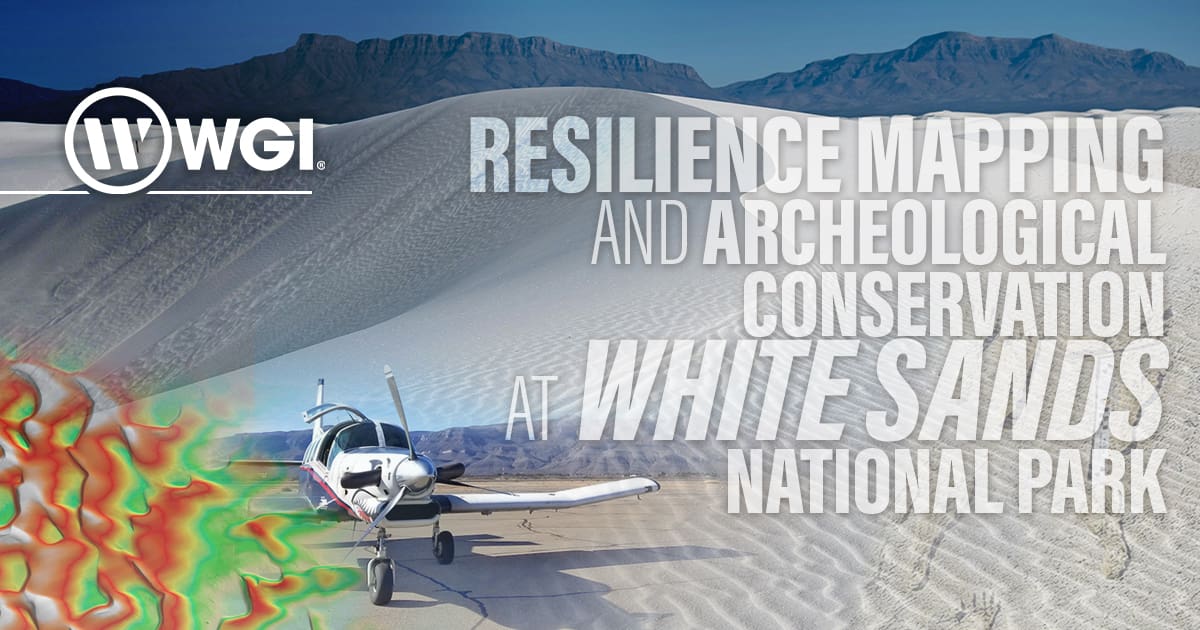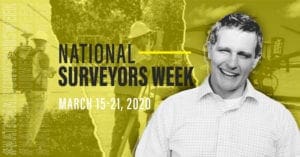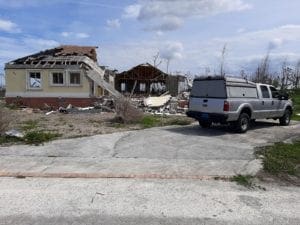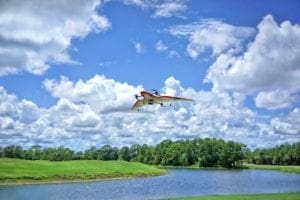
How (And Why) To Create An Emerging Technology Heat Map
A rapid assessment tool that helps uncover the emerging technologies and trends that are of strategic importance to your business.
Learn from award-winning professionals — explore our whitepapers, blogs, and the latest industry updates.
Join our dynamic organization of engineers, land surveyors, landscape architects, environmental scientists, and architects!
Talk to a market leader today! We’ll answer any questions you have about our professional services.

White Sands National Park covers approximately 227 square miles in the Tularosa Basin in Southern New Mexico. The Park, part of the White Sands Missile Range, is well known for its white gypsum sand dunes, some measuring up to 60 feet tall. While this area attracts visitors for its stunning desert scenery, it is also home to multiple sites of archeological and anthropological significance, changing the way scientists understand the historical development of humans in the region.
During and after the last Ice Age, what is now known as Lake Otero occupied a large area within the Tularosa Basin, where the surrounding wetlands provided a habitat rich in plant and animal life. Wooly mammoths, giant ground sloths, dire wolves, camels, and American lions are among some of the prehistoric creatures occupying the region. As the Ice Age subsided, a significant warming event appears to have reduced Lake Otero to a marshy wetland, as evidenced by a large volume of fossilized animal tracks, which are routinely uncovered by the Park’s shifting sand dunes.
Remarkably, fossilized footprints of homo sapiens were also discovered among the animal prints in 2007. This collection of human footprints would later be confirmed as the oldest evidence of humans in North America, as well as one of the world’s greatest concentrations of fossilized human footprints. Footprints of women and men, and large numbers of smaller, sub-adult footprints, were uncovered as the excavation continued over several years. The unique placement of the prints initially provided anthropologists insight into these hominids’ hunting, gathering, and migratory techniques. As archeologists describe, it was easy to observe children traveling alongside an adult, later to be lifted off the ground and presumably carried. However, the most important discovery at White Sands involved the age of these footprints, challenging the earlier theory that humans migrated into North America via the Bering Land Bridge and occupied the region some 13,500 to 16,000 years ago. Although the fossilized footprints at White Sands could not be carbon-dated directly, water plant seeds were found wedged between the footprints and surrounding layers of sediment. Carbon dating of these seeds confirmed that humans were present at Lake Otero approximately 23,000 years ago, 7,000 years earlier than previously theorized.
Unfortunately, these archeological sites are lost almost as quickly as they are found, with some eroding in less than two years due to the shifting dunes, dust storms, and annual monsoons. In response, federal government agencies coordinated a resilience strategy in 2007, which involved characterizing surface change using multi-temporal, high-resolution lidar over the core 40km² White Sands Dune Field.
WGI is a multidisciplinary engineering and consulting firm based in West Palm Beach, Florida. WGI’s Geospatial division is also a national leader in large-scale aerial mapping using industry-leading remote sensing technology and customized product development for a wide range of geospatial solutions. As a prequalified federal provider of aerial lidar products and services, WGI represented a perfect fit for a project requiring high-resolution lidar acquisition to characterize the topographic features at White Sands National Park.
Mapping large-scale surface change using high-resolution topographic datasets is a robust method for assessing the resilience of White Sands’ dune fields to natural and human-induced environmental changes. Therefore, federal agencies have been collecting lidar datasets with annual to multi-annual frequency since the discovery of human footprints in 2007. This data allows morphologic characteristics of the dunes to be individually tracked over time and later compared to seasonal weather fluctuations to assess dune response to natural changes. Understanding this response provides a baseline to evaluate future changes and aids archeological conservation efforts. The comparison of multiple lidar-derived elevation maps at a one- to two-year frequency is essential to determine dune field response to increasing environmental pressure from changes in climate and land-use.
WGI provided lidar acquisition using a fixed-wing aircraft and geospatial product development from 2020 to 2022. This recurring aerial survey was necessary to efficiently determine the areas of high erosion and support federal initiatives such as public trails development, interpretive media, and national elevation mapping. White Sands remains one of the highest-quality lidar datasets available to the public through federal portals.
Each lidar acquisition project requires careful planning by experienced professionals who understand the mapping specifications and the sensor technology used to meet those specifications. In the case of White Sands, the projects required simultaneous aerial lidar and imagery collection at an extremely high spatial resolution, considering the size of the area. WGI’s first project in 2020, covered approximately 136 square miles with lidar required to measure over 16 points within a square meter of the ground (≥16pls/m²) and aerial imagery required at a resolution of less than 10cm per pixel, Ground Sample Distance (10cm/pix GSD).
The following year, the mapping area was expanded to cover an additional 70 square miles with an improved imagery resolution of 7.5cm GSD. Additionally, the lidar point cloud resolution was greatly improved to a pulse density of 50pls/m². This increase is because a lidar point cloud is the primary product used in creating Digital Elevation Models (DEM), a raster product or image where each pixel represents and is colored with a corresponding elevation. Higher densities in the source lidar point clouds allow for higher-resolution DEMs with smaller pixels. In the case of White Sands, a 50pls/m² point cloud meant that ground measurements were no more than 0.14m apart, and a DEM with a pixel size of 0.25m could easily be generated over the entire 200-square
mile area. The quality of these elevation models, provided by WGI, enables agencies to better analyze hydrologic flow and apply an improved change detection analysis that can observe less granular dune movement and erosion.
WGI acquired topographic lidar using a fixed-wing aircraft and the G2 Sensor System designed by Teledyne Geospatial. This uniquely innovative, single-platform system, integrates two Galaxy T2000 lidar channels, a 100MP medium-format, metric camera from PhaseOne, and an extremely precise position and orientation system through Trimble-Applanix. WGI was the first firm in the world to adopt this sensor platform for accurate and high-resolution topographic data acquisition and remains one of a few providers able to collect ultra-high resolution lidar efficiently across large project areas with this technology. The Galaxy T2000 lidar sensor is an established and effective piece of equipment for large-scale mapping projects. However, the integration of two Galaxy T2000 systems in the G2 configuration was essential for cost-effectively meeting the high pulse density needs of the 2022 collection at White Sands, and this area remains one of only a few National Parks to benefit from data provided using this technology. The G2 platform not only offers co-collected aerial imagery, but the highest laser measurement rate or pulse repetition frequency (PRF) of up to four million effective pulses per second. With each pulse able to discern up to 8 discrete measurements, WGI boasts aerial equipment able to take as many as 32 million measurements in a single second. Additionally, the two laser channels are tilted and pitched in opposition to each other to provide a more even point distribution and a semi-oblique angle of scanning, respectively. Thanks to the often-clear skies in southern New Mexico, WGI is able to fly the 200-square mile site in a single day once airspace approvals are granted by the nearby missile range.
WGI’s survey team was required to collect new geodetic control for the project area to support the aerial data acquisition. All federal lidar projects adhering to specifically outlined Lidar Base Specifications (LBS) and the American Society for Photogrammetry and Remote Sensing’s (ASPRS) Accuracy Standards for Digital Geospatial Data require control survey activity to calibrate and validate the airborne data. Although survey control points can be difficult to collect in some remote and restricted areas, they are far more accurate than aerial remote sensing and offer an excellent source to ensure the resulting geospatial products are accurate. WGI coordinated with the U.S. Army at White Sands Missile Range for the survey control location planning and scheduling efforts, executing the survey safely and without disturbing the known archeological sites.
WGI produced various derivative products from imagery and lidar data to support the required research, analysis, and planning activities. The high-resolution elevation data from multiple years is also publicly available. Critical for further resilience mapping activities, WGI’s derivatives included a revised or upgraded version of the standard federal lidar deliverables, including the lidar point cloud (.las format), classified with the points associated to the topographic feature they measure. The bare-earth DEM at a 0.25m resolution was another critical product in assessing changes of the White Sands dune field. WGI also provided a mosaic of the elevation models in an ESRI Geodatabase format and a lidar-based intensity raster, which is a greyscale image of the area’s surface reflectance. WGI adjusted hundreds of images for color and tone and triangulated/combined them to create a seamless RGB orthomosaic at 7.5cm GSD. Finally, as with all federal lidar projects, FGDC-compliant metadata and project reports are compiled and delivered to aid in managing this lidar dataset as part of a much larger database.
WGI’s high-quality lidar and imagery data are a large part of White Sands National Park’s archeological and conservation efforts over the past few years. Data was consistently delivered on time, meeting or exceeding the quality of previous years’ deliverables. Federal agencies can use the imagery data to spot previously undiscovered tracks, and the lidar proved useful in tracking dune movement and erosion trends across the park. In addition to these planned uses, the lidar data revealed many unknown ranching roads, Native American trails, and potential evidence of the Spanish salt trails from the 16th century. The investment in high-quality lidar and imagery data has proved fruitful to White Sands National Park, with more discoveries yet to come from this data’s use.
For more information about this study or to have a conversation with one of our experts, please contact us today.

WGI is a national design and professional services firm leading in technology-based solutions for the construction of public infrastructure and real estate development. At WGI, we’re providing Tomorrow’s Infrastructure Solutions Today.

A rapid assessment tool that helps uncover the emerging technologies and trends that are of strategic importance to your business.

Jim Sullivan, PSM joins us to provide a little bit of history about the surveying profession, explain how surveyors contribute to the development of our communities, and tell us why kids should consider a career in surveying!

WGI makes a very significant 41-spot jump from last year’s Hot Firm ranking of #76.

WGI’s CEO, David Wantman recently teamed up with the Acts 2 Worship Center Church and donated one of WGI’s geospatial trucks to help a family who was severely impacted by Hurricane Dorian start rebuilding their home.

WGI, in collaboration with industry partners, is helping The Boys & Girls Clubs of Palm Beach County develop a new facility in Dreher Park to serve economically disadvantaged youth in West Palm Beach’s District 5, providing essential programs in a dedicated, community-focused environment.

Working with golf course designer Kipp Schulties of Kipp Schulties Golf Design, Inc., it was determined that an aerial mapping approach would minimize time onsite and create very little impact on golf course activities.
You’ve been searching for a place like WGI. We look forward to meeting you soon.
Sign up to receive emails to hear our latest news and achievements in our monthly newsletter.
Enter your zip code, and we’ll personalize your experience with local projects, office locations, team members, and more.
WGI supports its associates with meaningful opportunities for growth, strong benefits and perks, while we work collaboratively with clients and co-consultants to shape and improve communities.






WGI is a dynamic organization with opportunities nationwide for engineers, land surveyors, landscape architects, environmental scientists, and architects.